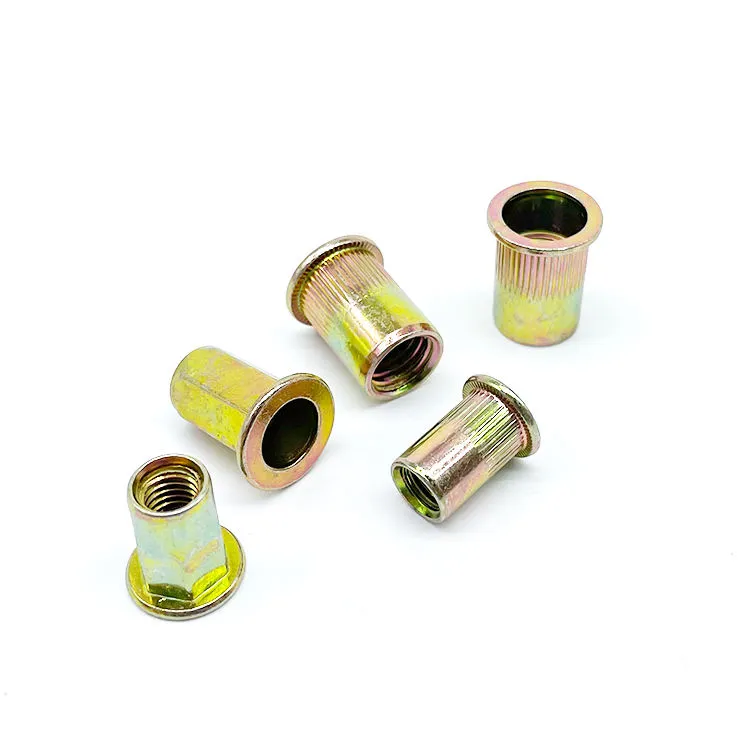

M10 Mudguard Washers for Enhanced Vehicle Protection and Stability in Off-Road Conditions
Nov . 07, 2024 12:18 Back to list
M10 Mudguard Washers for Enhanced Vehicle Protection and Stability in Off-Road Conditions
Understanding the M10 Mudguard Washer A Key Component for Your Vehicles
In the world of automotive maintenance and repair, attention to detail is paramount. Among the many components that contribute to the smooth functioning of a vehicle, the M10 mudguard washer plays a significant yet often overlooked role. While it may seem like a small and insignificant part, its function is vital for ensuring safety and performance.
What is an M10 Mudguard Washer?
An M10 mudguard washer is a type of washer designed specifically for use with mudguards—also known as fenders—on vehicles. The “M10” denotes that the washer has a 10mm inner diameter, making it suitable for M10 bolts. Washers are typically placed under the heads of these bolts to distribute the load and prevent damage to the surfaces they are securing. In the case of mudguards, they serve to hold the guard in place while also preventing debris from inciting rust and other deterioration.
Importance of Mudguard Washers
Mudguards are critical components of any vehicle, as they protect the body from mud and debris thrown up by the tires. An effective mudguard isn’t just about aesthetics; it’s about functionality. A properly secured mudguard will not only keep the vehicle looking good but will also help maintain its structural integrity over time. The M10 mudguard washer plays a key role in this process by ensuring that the bolts are secured tightly while minimizing the risk of rust and corrosion.
When mudguard washers are used, they create a larger bearing surface, which helps reduce the stress placed on the bolt itself. This prevents the bolt from pulling through the softer material of the mudguard, thereby ensuring that it remains firmly in place even under the most demanding conditions. Without the appropriate washers, vibrations from rough terrain can cause bolts to loosen, potentially leading to the mudguard detaching from the vehicle. This creates a dangerous situation for the driver and other road users.
Choosing the Right Washer
m10 mudguard washer

When selecting M10 mudguard washers, it’s essential to consider the material and type. Washers are available in various materials such as stainless steel, plastic, or rubber, each offering different benefits. Stainless steel is known for its durability and resistance to corrosion, making it an ideal choice for outdoor applications. Conversely, rubber washers provide excellent vibration dampening, which can be beneficial in maintaining the integrity of the mudguard over time.
It is also important to ensure that the washer fits the bolt correctly. An M10 washer must fit comfortably onto an M10 bolt, providing enough grip without being overly tight. A proper fit will promote even load distribution, thereby enhancing the overall effectiveness of the installation.
Installation and Maintenance
Installing M10 mudguard washers is a straightforward process, but like any vehicle maintenance task, proper technique is crucial. One should always ensure that the mudguard is correctly positioned before tightening the bolts. When securing the bolts, it is advisable to tighten them in a crisscross pattern to ensure even tension.
Regular maintenance checks are also vital. Over time, washers can wear down or corrode, leading to potential issues. It’s a good practice to inspect the washers during routine vehicle checks and replace them as necessary to avoid future complications.
Conclusion
In conclusion, the M10 mudguard washer may be a small component, but its impact on vehicle safety and performance is significant. By ensuring that mudguards are securely fastened and well-maintained, drivers can enhance their vehicle’s longevity and reliability. The next time you conduct vehicle maintenance, don’t overlook the humble M10 mudguard washer—it plays a critical role in keeping your vehicle protected and performing optimally.
Latest news
-
High-Strength Hot Dip Galvanized Bolts - Hebei Longze | Corrosion Resistance, Customization
NewsJul.30,2025
-
Hot Dip Galvanized Bolts-Hebei Longze|Corrosion Resistance&High Strength
NewsJul.30,2025
-
High-Strength Hot-Dip Galvanized Bolts-Hebei Longze|Corrosion Resistance&High Strength
NewsJul.30,2025
-
Hot Dip Galvanized Bolts-Hebei Longze|Corrosion Resistance&High Strength
NewsJul.30,2025
-
Hot Dip Galvanized Bolts - Hebei Longze | Corrosion Resistance, High Strength
NewsJul.30,2025
-
High-Strength Hot Dip Galvanized Bolts-Hebei Longze|Corrosion Resistance, Grade 8.8
NewsJul.30,2025

